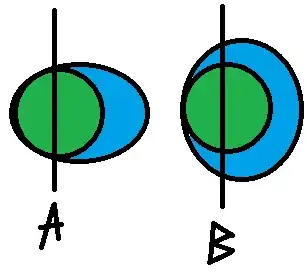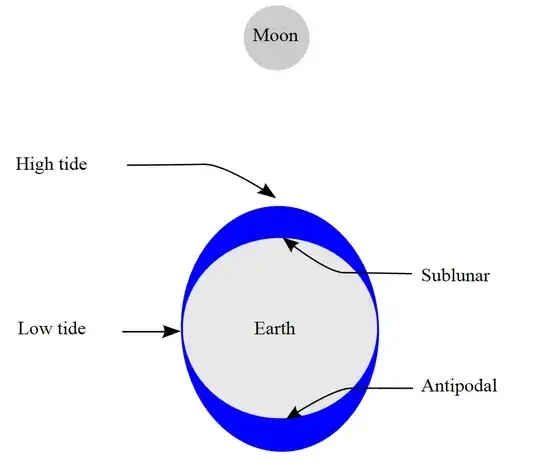Assuming a situation similar to this, where the moon causes slower but massive tides that slowly encircle the globe. Would the poles be constantly underwater or not underwater (like A or B below)?:
Or would it depend on the moon?
Main question: Would a massive tide be closer to A or B or C(something else)?

